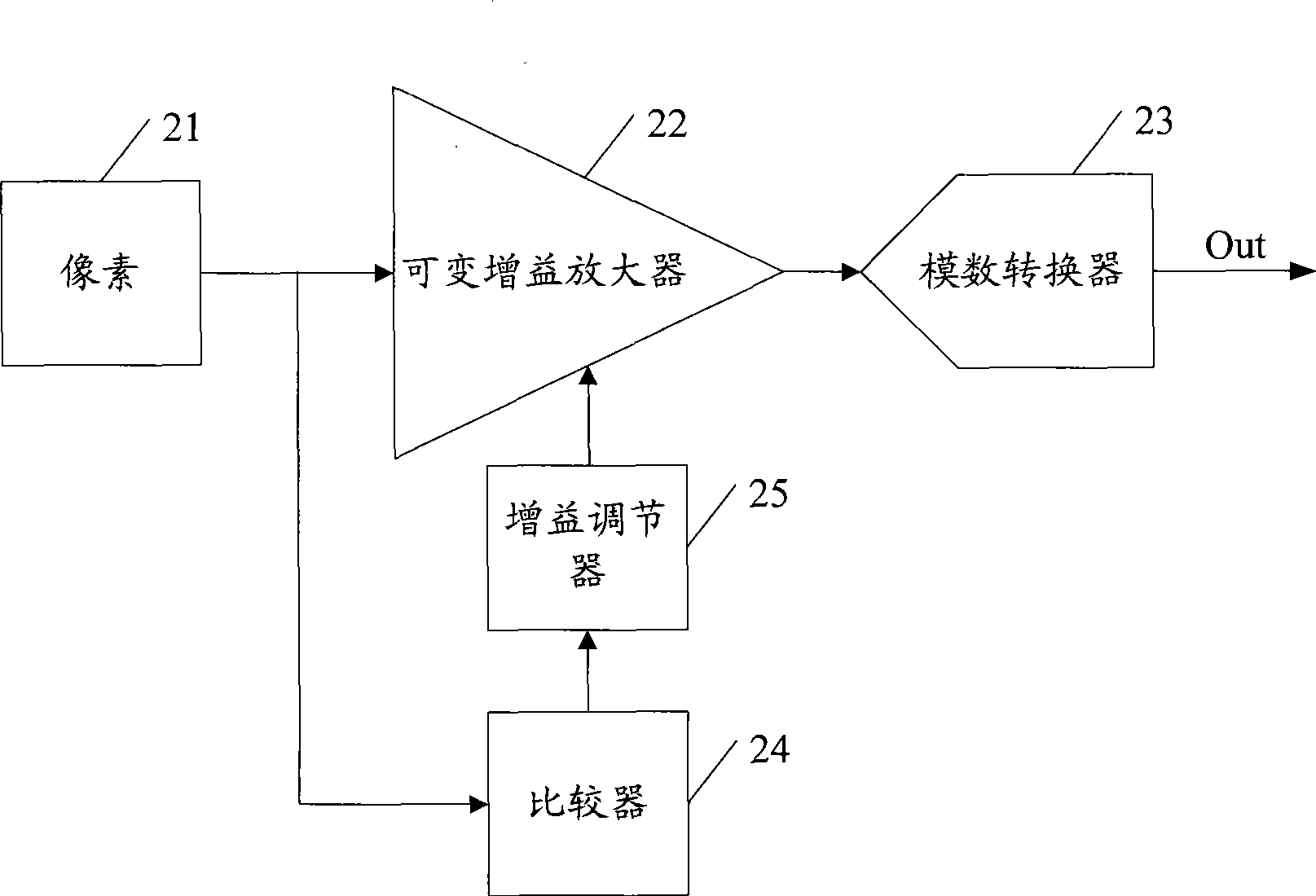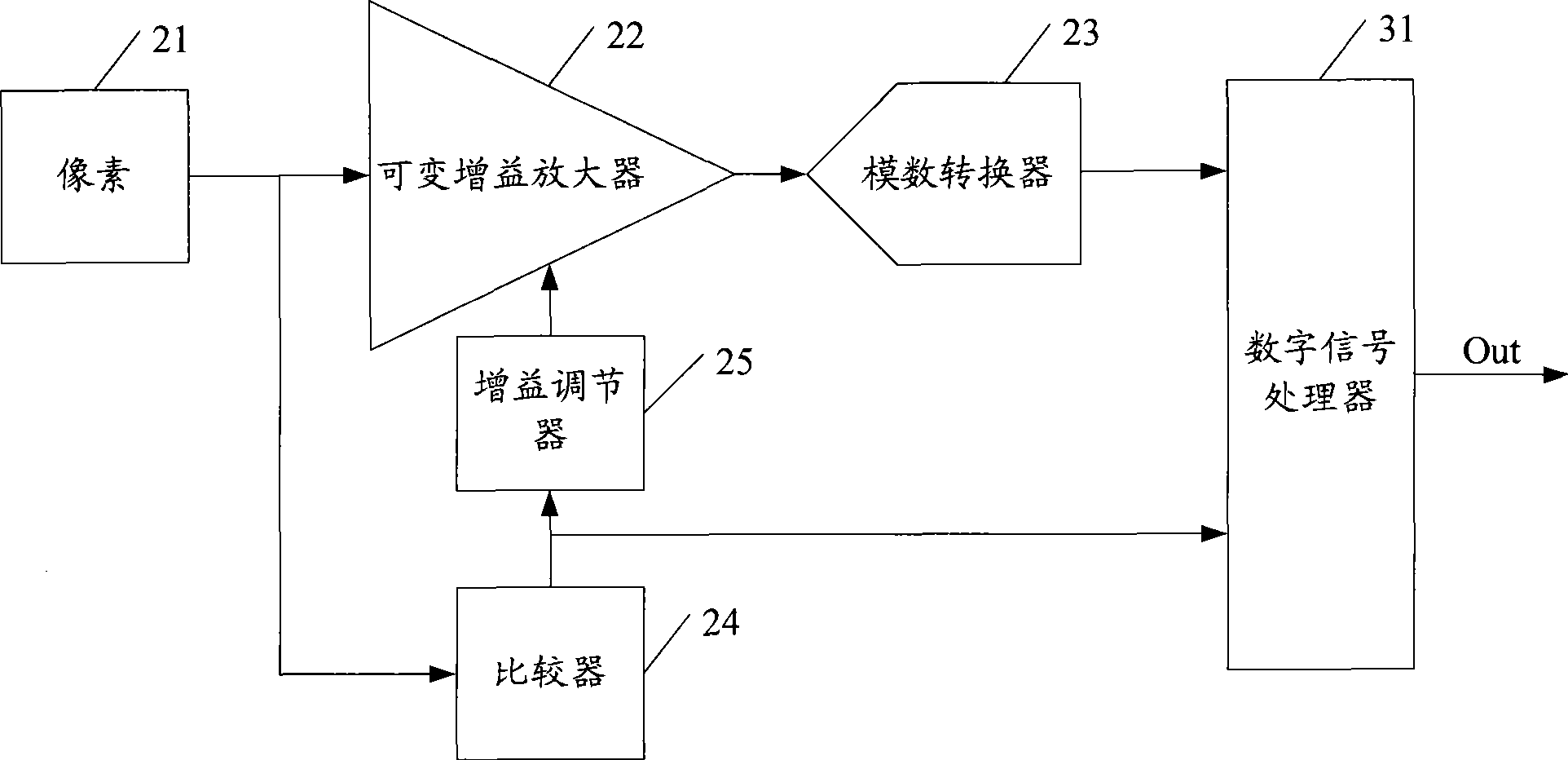CMOS image sensor reading circuit and reading method
An image sensor and readout circuit technology, applied in the field of image processing, can solve problems such as large difference in output value between strong light and dark light, great loss of image details, and inability to meet the requirements of human eye image quality, and achieves noise reduction, Effects with a large dynamic range
- Summary
- Abstract
- Description
- Claims
- Application Information
AI Technical Summary
Problems solved by technology
Method used
Image
Examples
Embodiment Construction
[0032] Existing image sensor readout circuits always output the pixel exposure voltage linearly, while the sensitivity of the human eye to light intensity changes logarithmically, not linearly like the signal received by the image sensor. As the light intensity increases, the human eye becomes less sensitive to changes in brightness. Between 0.01 lumens and 100 lumens, the human eye's sensitivity to brightness changes is an incremental constant: the human eye can feel a brightness change of 0.02 lumens for 1 lumen intensity light, a 0.2 lumen brightness change for 10 lumen intensity light, and a 50 lumen intensity light. 1 lumen brightness change, 100 lumen light 2 lumen brightness change. The brightness range beyond this does not increase in this way, but follows a more complicated law.
[0033] In order to obtain higher-quality images, the embodiments of the present invention provide a CMOS image sensor readout circuit and a readout method. The specific implementation of th...
PUM
 Login to View More
Login to View More Abstract
Description
Claims
Application Information
 Login to View More
Login to View More - R&D
- Intellectual Property
- Life Sciences
- Materials
- Tech Scout
- Unparalleled Data Quality
- Higher Quality Content
- 60% Fewer Hallucinations
Browse by: Latest US Patents, China's latest patents, Technical Efficacy Thesaurus, Application Domain, Technology Topic, Popular Technical Reports.
© 2025 PatSnap. All rights reserved.Legal|Privacy policy|Modern Slavery Act Transparency Statement|Sitemap|About US| Contact US: help@patsnap.com



